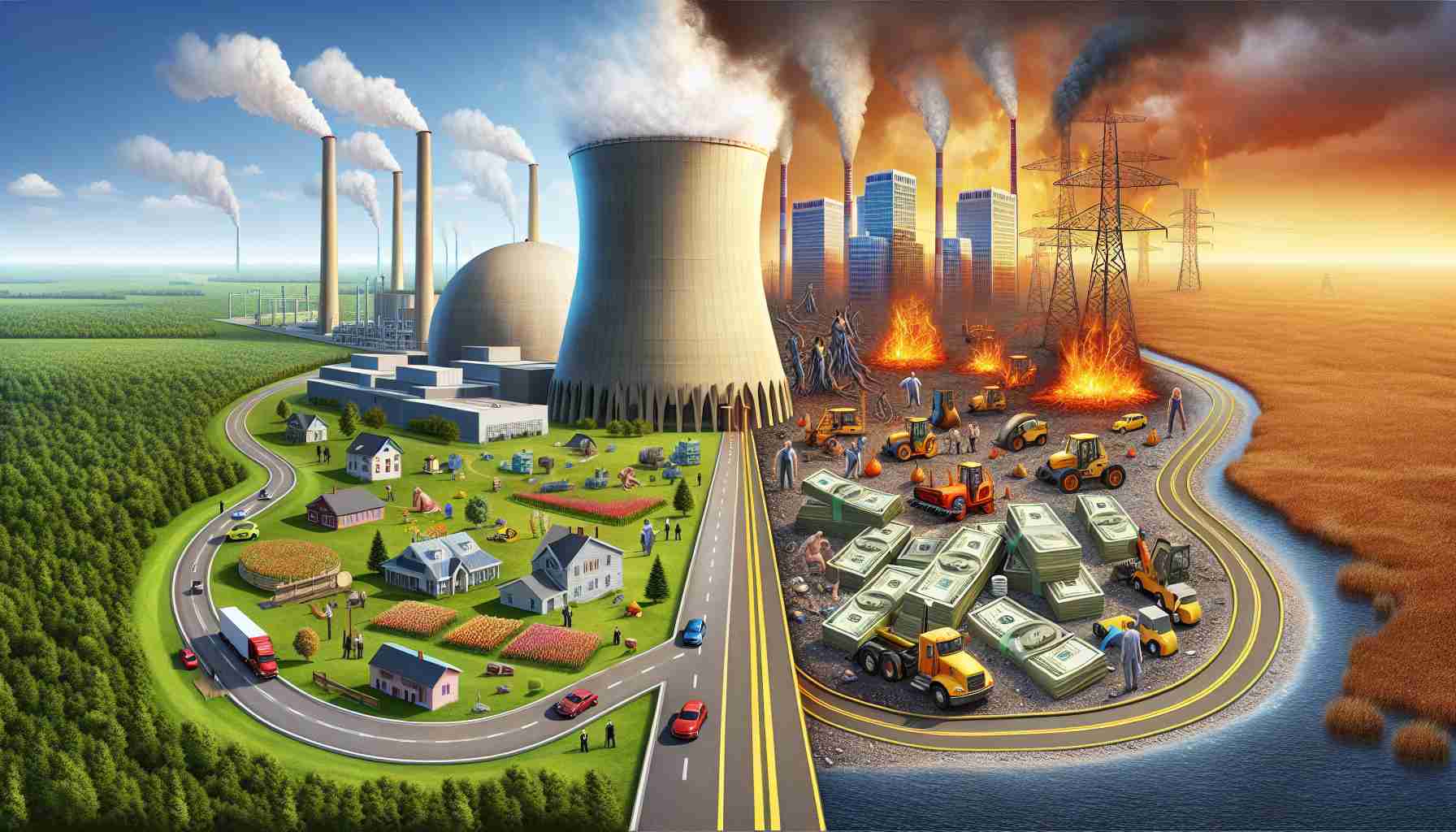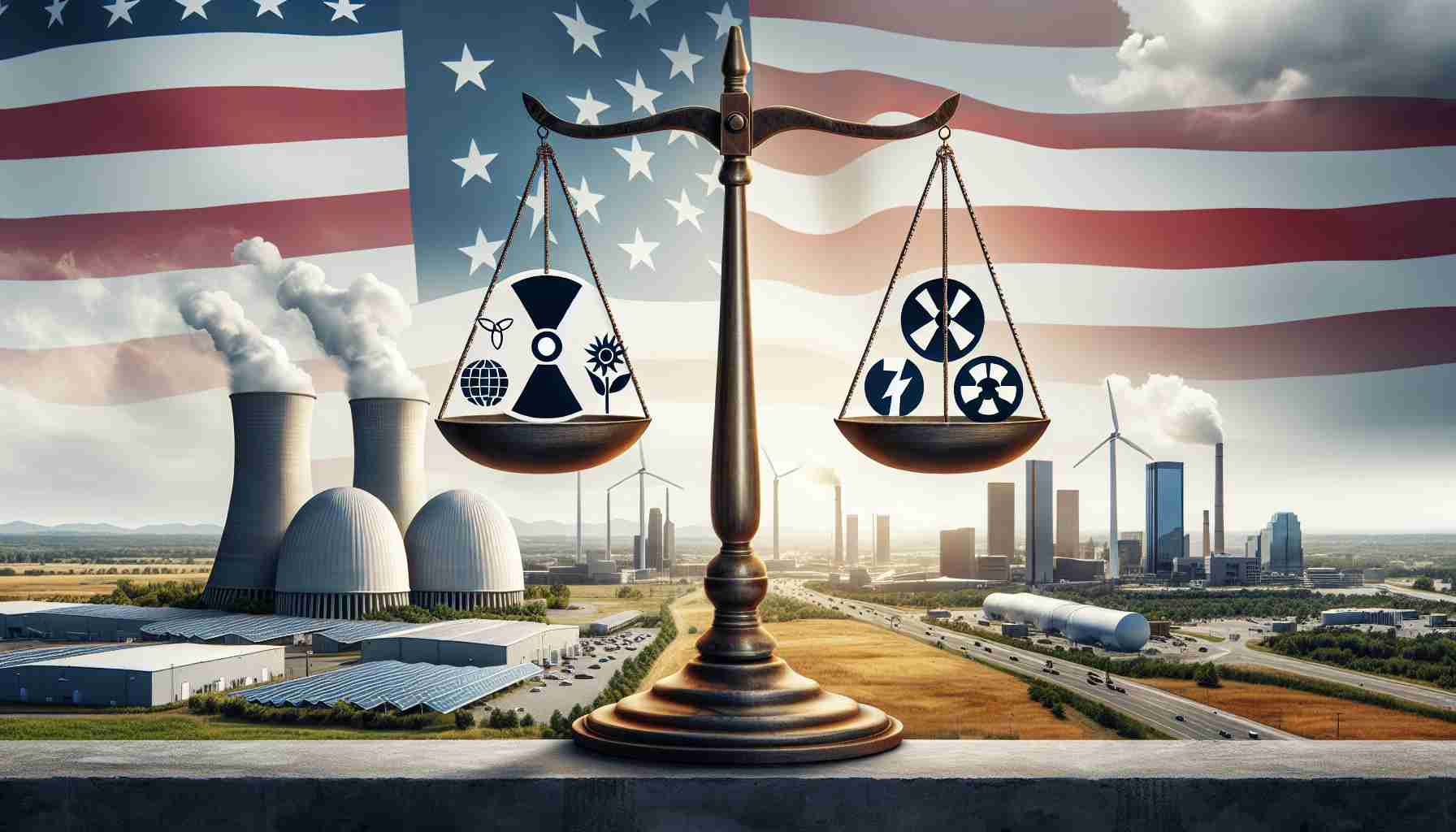Navigating Indiana’s Energy Crossroads
Indiana stands at a pivotal juncture as policymakers deliberate the future of its energy infrastructure with House Bill 1007. This legislation, advocating for a nuclear energy surge to bolster the state’s power grid, has sparked a fervent debate. Stakeholders in this discussion are weighing the potential benefits of nuclear energy against the economic implications for Indiana’s residents.
Nuclear Energy: A Double-Edged Sword
Advantages:
– Reliable Energy Supply: Nuclear power is championed for its ability to provide a stable and uninterrupted energy source, crucial as Indiana phases out older coal and gas plants.
– Environmental Benefits: With a lower carbon footprint compared to fossil fuels, nuclear energy offers a pathway to achieving sustainability targets, aligning with broader eco-friendly agendas.
Challenges:
– Economic Concerns: Critics highlight significant financial risks, since [past investments in nuclear projects](https://www.citizensactioncoalition.org) in other regions led to increased consumer rates, raising fears of similar impacts in Indiana.
– Long-Term Liabilities: The enduring challenge of nuclear waste management and fears of safety risks continue to fuel skepticism among the public.
Public Sentiment and Future Implications
Residents, contrasted with officials, voice concerns about potential rate hikes that could strain household budgets. Renewable energy proponents warn of a possible diversion of resources from wind and solar investments, crucial for sustainable economic growth.
Oversight and Innovation
To mitigate potential financial fallout, any rate adjustments tied to nuclear projects must undergo scrutiny by the Indiana Utility Regulatory Commission. Meanwhile, advancements in small modular reactors (SMRs) could offer future solutions, promising enhanced safety and financial viability.
The Path Forward
As Indiana contemplates its energy policy, the balance between innovation, economic feasibility, and environmental responsibility will be essential. This decision will set a precedent, potentially influencing regional energy strategies and national energy discussions.
The Impact of Nuclear Energy on the Environment and the Future of Humanity
As Indiana considers House Bill 1007 to pivot towards nuclear energy, the environmental and economic ramifications of such a decision are more significant than ever. Nuclear energy, while offering a reliable and low-carbon alternative to fossil fuels, is a double-edged sword with implications that stretch far beyond the borders of Indiana.
Environmental Impact and Sustainable Development
Nuclear energy is lauded for its strong environmental credentials, especially in its potential to significantly reduce carbon emissions. As the world accelerates efforts to combat climate change, the transition from fossil fuels to cleaner sources of energy is crucial. Nuclear power plants emit negligible amounts of carbon dioxide during their operation, making it an attractive option for states like Indiana that are phasing out coal and gas plants. The potential reduction in greenhouse gas emissions could help in stabilizing the climate, thereby leading to positive long-term environmental effects such as reduced extreme weather events and improved air quality.
However, the environmental benefits of nuclear energy come with substantial challenges—primarily in the form of nuclear waste. The long-lived radioactivity of nuclear waste necessitates secure management and storage solutions to prevent ecological contamination. A failure in managing this waste can lead to severe consequences, highlighting the need for advanced technologies and robust policies to handle nuclear by-products safely.
Economic Considerations and Public Concerns
Economically, the stakes are high. The initial investment in nuclear technology is substantial, and past ventures have shown that the costs can sometimes outweigh the benefits, particularly if projects exceed budgets or if rate hikes burden the consumers. These economic risks underscore the importance of diligent oversight by authorities such as the Indiana Utility Regulatory Commission.
Beyond the immediate economic implications, nuclear energy’s role in the broader transition to renewable energy sources is debated. There is concern that significant investment in nuclear technology could divert valuable resources away from advancing renewable energy projects, like wind and solar, which are imperative for long-term sustainable economic growth.
Humanity’s Future: Innovation and Global Energy Strategies
The development and integration of small modular reactors (SMRs) could reshape the nuclear landscape by offering safer and more economically viable options. If successful, SMRs could address many of the safety and financial concerns currently associated with traditional nuclear reactors.
Indiana’s decisions will influence not only its energy landscape but could also serve as a model for national and global strategies. Should nuclear energy prove beneficial in Indiana, it could catalyze regional energy developments and inform global decisions about energy policies.
Ultimately, the choice Indiana makes regarding nuclear energy is emblematic of the broader choices facing humanity. Balancing between technological advancement, environmental stewardship, and economic stability will determine our collective future, shaping how humanity adapitates to and thrives in an increasingly energy-dependent world.
The Future of Energy in Indiana: Exploring Nuclear Opportunities and Challenges
Embracing Nuclear Energy in Indiana: Emerging Trends and Insights
As Indiana faces critical decisions regarding its energy infrastructure, discussions surrounding House Bill 1007 spotlight nuclear energy as a potential game-changer for the state. This pivot towards nuclear power promises several innovative trends and insights, with stakeholders delving deeper into technology, safety advancements, and economic prospects.
Innovations in Nuclear Technology
Recent advancements in nuclear technology, particularly in the development of Small Modular Reactors (SMRs), provide a beacon of hope for Indiana’s energy future. These reactors promise enhanced safety measures and economic efficiency compared to traditional nuclear plants. SMRs’ modular nature allows for scalability, enabling states like Indiana to adjust their energy outputs according to demand without the financial burdens of large-scale nuclear plant investments.
Economic and Environmental Forecasts
Pricing and Market Analysis:
Amidst concerns about potential economic implications, studies suggest that investment in advanced nuclear technologies could stabilize energy prices over the long term. While initial costs may be high, analysts predict that long-term operational savings, combined with governmental incentives for clean energy projects, could offset these expenses. This economic insight is crucial for policymakers aiming to balance energy affordability with sustainability.
Environmental Sustainability:
Nuclear energy’s low carbon footprint positions it as a vital component of Indiana’s strategy to achieve its climate goals. By diversifying its energy sources with nuclear power, Indiana aims to reduce dependency on fossil fuels and lower greenhouse gas emissions, aligning with broader environmental agendas.
Security and Safety Measures
Safety Protocols in Nuclear Facilities:
As Indiana considers expanding its nuclear capabilities, rigorous safety standards and security protocols will be paramount. Innovations in SMR design include passive safety systems that minimize risks associated with nuclear accidents, addressing public safety concerns.
Waste Management Solutions:
Long-term nuclear waste management remains a hurdle; however, advancements in waste recycling and storage present viable solutions. Cutting-edge research into waste reduction and disposal could ease public skepticism and enhance the sustainability of nuclear energy in Indiana.
The Role of Renewable Energy Integration
Concerns about sidelining wind and solar investments persist, yet experts advocate for a hybrid energy model. By integrating nuclear power with renewables, Indiana can create a diversified energy portfolio that maximizes reliability and environmental benefits. This balanced approach could drive sustainable economic growth while supporting energy independence.
Future Projections and Innovations
Predictions for Indiana’s Energy Landscape:
As energy technology evolves, Indiana’s commitment to exploring diverse energy solutions will likely influence regional and national energy policies. The state stands at the forefront of a potential energy transformation, setting a model for how traditional and modern energy sources can coexist and complement each other.
For further information on Indiana’s energy strategy and innovations, visit the official Citizens Action Coalition.
The source of the article is from the blog bitperfect.pe



